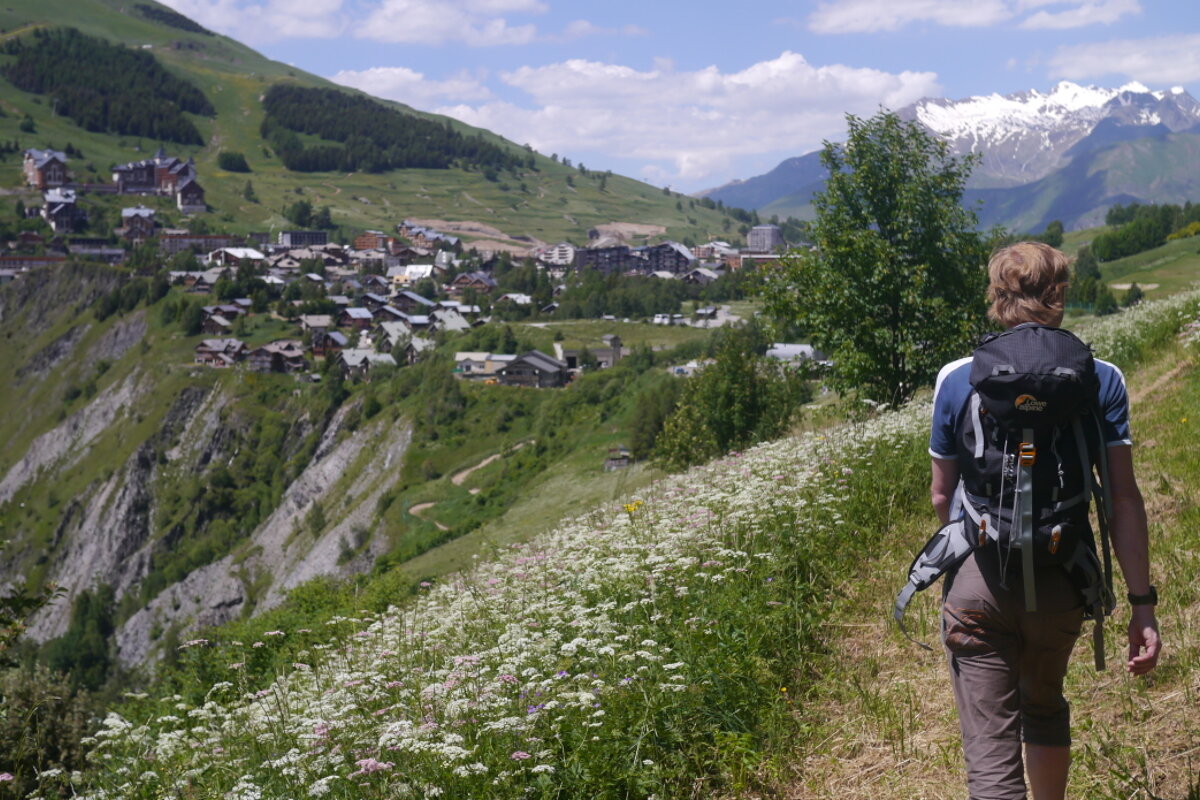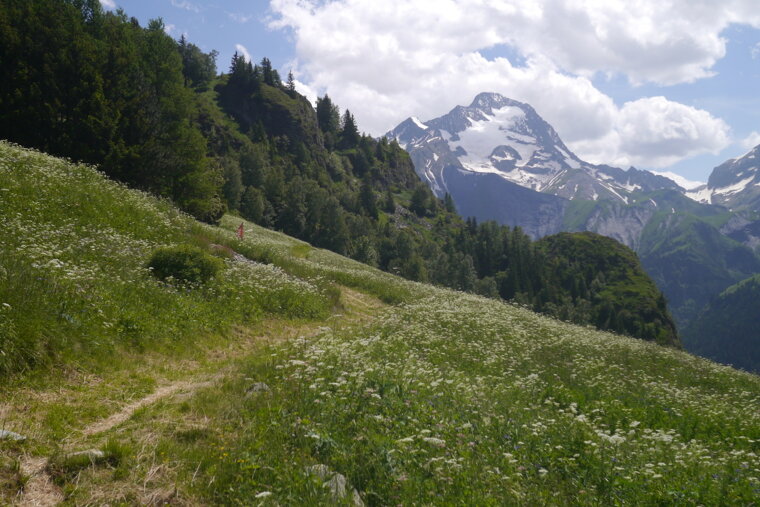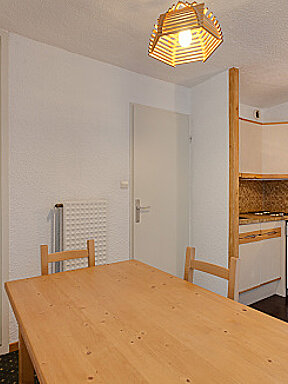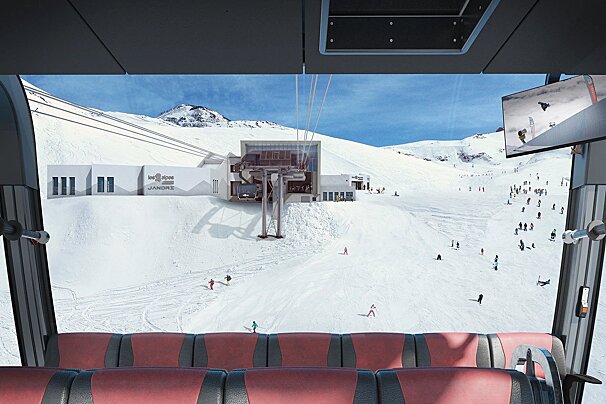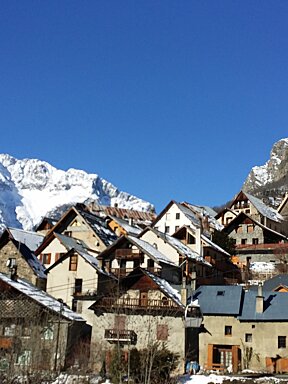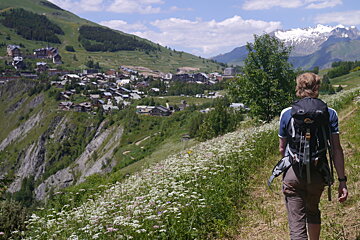
© Ellie Mahoney
Hiking in Les 2 Alpes
Discover the top Les 2 Alpes walking areas
If you're coming to Les Deux Alpes in the summer then chances are one of the activities you will want to do is walking or hiking. You can pop on your walking boots and explore the glorious summer alpine mountains, with 200km of paths you are spoilt for walks and hikes.
A large mountain area with some of the highest peaks in Europe and so many different routes and trails means there is something for everyone. Summer passes will provide you with access to the lifts meaning you can explore the high altitude terrain and enjoy the wonderful views without the slog!
There are gentle walking trails for those of you who would like an easy stroll or have children in tow, and then there are the longer more strenuous hiking routes for the active walker. If you are thinking of heading out higher into the Alps or tackling something a little more challenging then it is always advisable to chat to the mountain guides in town who will be able to give you more advice or even take you on a trail.
When heading off on a hike or walk it is always best to get as much information about the route as possible, head to the tourist office in town and check the weather forecast to make sure you are being as safe as possible.
For all the useful emergency services numbers head to our emergency services page and save the numbers before embarking on your walk or hike in 2 Alpes.
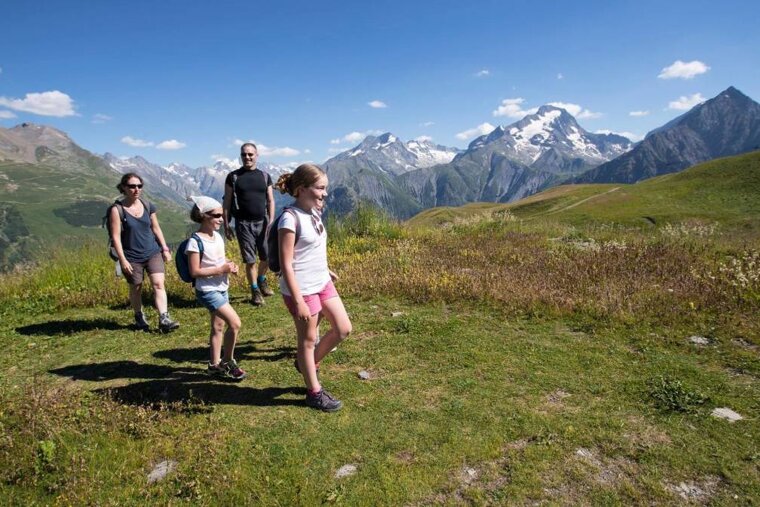
Walking trails and routes
We have compiled a list of hiking routes, ranging from very gentle village walks to those where you can enjoy the more challenging mountain hiking trails. The paths are normally very well sign posted and well maintained so you can set off on a number of trails feeling safe.
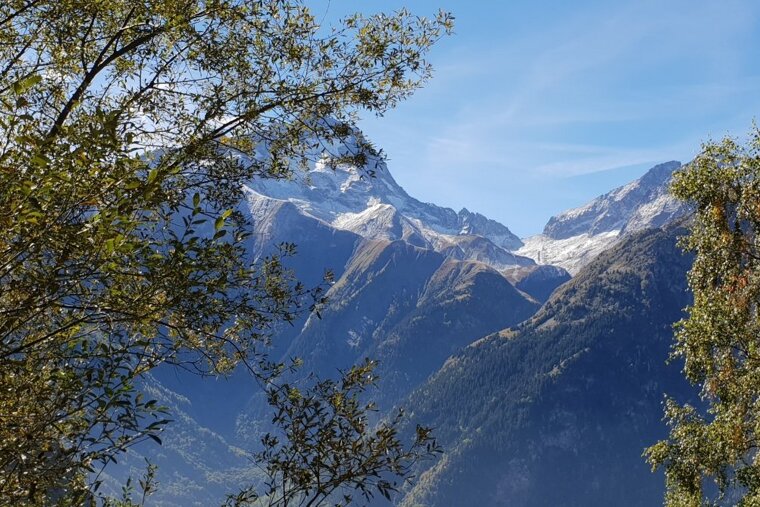
National parks routes
Ecrins National Park
Walking through the park is allowed, but since it's a protected wildlife and ecology area, you must obey certain rules and respect the environment you are passing through.
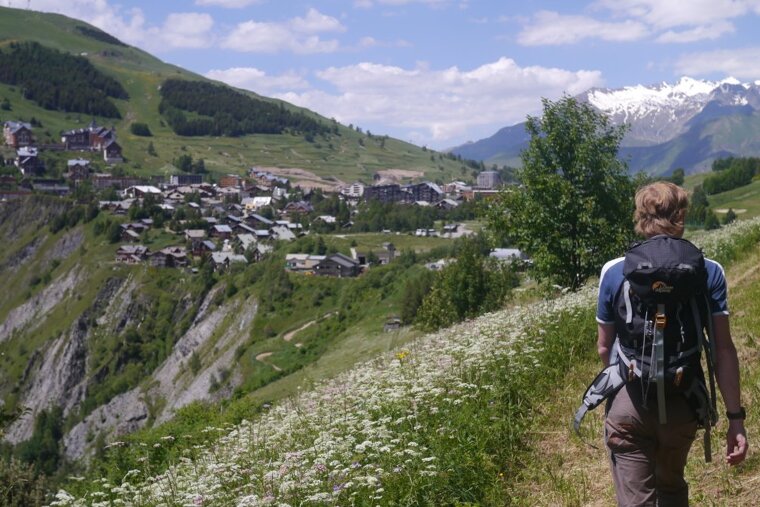
Hiring equipment
There are a number of sports shops in Les 2 Alpes stocking all the equipment and accessories you might need.
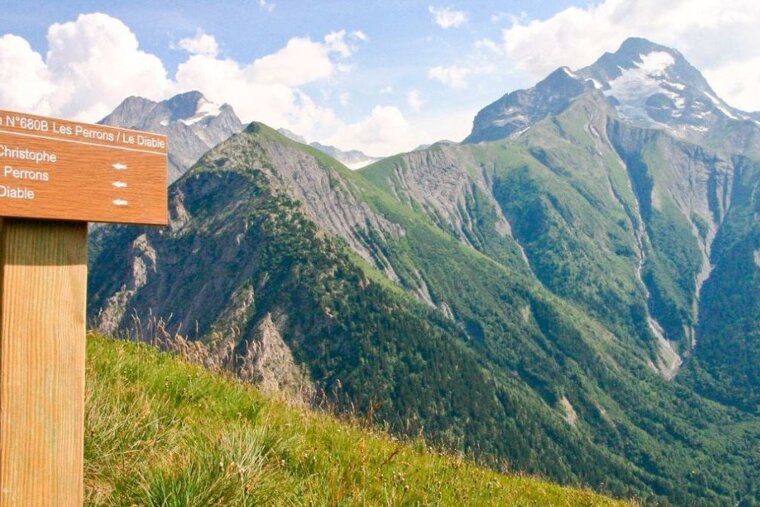
Safety advice
Although the footpaths are very well maintained and signposted, you should always exercise caution when venturing into the mountains, particularly at the beginning of the summer season when there may still be snow covering some parts of the footpaths, which must therefore be crossed with caution. Frozen avalanche debris can remain in the gullies until well into the summer making it dangerous for an ill-equipped or inexperienced walker to cross.
Before you embark on any activities in the mountains you should remember that you are likely to be at a considerably higher altitude with more rugged terrain than you are used to at home. For that reason it is particularly recommended that you:
are as physically fit as possible
- ensure you are fully aware of your limitations and of those accompanying you (children and elderly people)
are appropriately equipped
- choose sturdy footwear with ankle support, warm, water repellent clothing (even if the sun’s been beating down for days), sun cream, sunglasses, map, plenty water, food and snacks, first aid kit
check your itinerary with the tourist office
- even the easiest and best marked trails can present unexpected hazards such as rock slides or snowfall
allow plenty time for your chosen route
- leave an extra margin in case of incident
- let someone know where you are going and when you expect to be back
- nightfall may take you by surprise so it's wise to carry a flashlight or headtorch, don't rely on your phone in case of battery problems
check the weather forecast
- it's always advisable to check the weather forecast before setting off as this can greatly affect your walk or hike
stay on the marked trails
- especially important on steep slopes or precipices
- never take short cuts as doing so causes erosion, channelling the rain water and resulting in deterioration of the trails that are so hard to maintain
respect the environment
- the mountains here are breathtakingly beautiful but the balance of nature is very fragile
- in order to maintain the beauty of the valley; don’t light fires, ensure you take your rubbish with you, leave the flowers for others to admire and avoid making excessive noise that may disturb the wildlife
ensure your dog is kept on a lead where necessary
- look out for signs requesting that you keep your dog on a lead
- some areas are prohibited to dogs altogether, which is done to protect local wildlife
- it is prohibited to let your dog off the lead at all between 15 April and the end of June (it's breeding season for many mountain species and it is important that the animals are left in peace)
look out for Patou dogs protecting herds
- increasingly hikers in the French Alps are coming across herds of cows, sheep or goats that are protected by these large white coated dogs
- raised from puppies with the flock, they are there to protect them from the growing wolf population in France
- if you come across a Patou:
- keep calm, speak softly and yawn*
- do not make eye contact
- wait for it to assess you and let it sniff you if approached
- put something between you and the dog - a backpack, hat, jumper
- do not touch it
- DO NOT RUN… retreat slowly without turning your back on it
- if followed keep walking at an even pace - it should soon get bored and turn back
- educate children on how to act around Patous and their flocks
- keep your dog on a short lead and under control going far around any flocks you encounter, and if in doubt, turn back, but if attacked let your dog go…
*yawning is reportedly a sign of appeasement among dogs?!?
